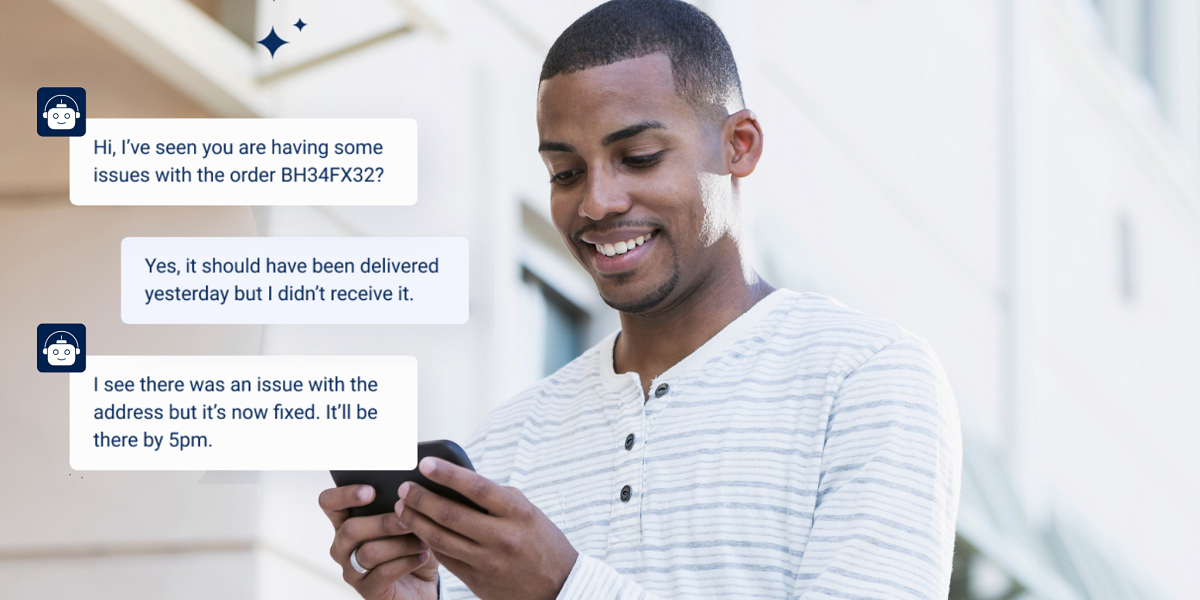Creating a seamless customer experience in 2022
THE ARTICLES ON THESE PAGES ARE PRODUCED BY BUSINESS REPORTER, WHICH TAKES SOLE RESPONSIBILITY FOR THE CONTENTS

Inbenta is a Business Reporter client
Unified interactions with your customers are key to your company’s long-term growth and brand image
Over the past two years, thousands of brick-and-mortar stores and customer-facing centres have closed their doors. They haven’t gone bankrupt or disappeared from the face of the earth – most of them have simply shifted their efforts to online channels.
Yet, while providing a good end-to-end experience was quite easy face to face with customers, digital environments can feel quite fragmented, leaving customers confused or unsatisfied.
Customer service teams need to stay ahead of the curve and be able to build smooth experiences to satisfy the ever-increasing expectations of consumers.
Forget about isolated channels
Your customer experience needs to be approached holistically.
You can no longer expect customers to use one channel, then another, and repeat everything they need or want. Omnichannel has become a must, and channels can no longer be disconnected from each other.
Let’s say a consumer’s purchase journey starts on Instagram, where they ask about the functionalities of a product through a direct message. They then move on to the website and proceed to launch a live chat to enquire about payment methods or delivery times.
This has now become a typical customer path – and your CX planning needs to be ready for it. You need to make sure you know all the details about that customer’s prior questions, requests and possibly even purchases, no matter which channel they choose.
Let consumers pick up where they left off
People live busy lives, running from here to there, so you should expect consumers to communicate with your brand at any point during their journey.
Communications are also likely to be full of interruptions. Quite often, customers will be on the go and will have to stop their communication with you before picking it up later that day, or the day after.
This is something that has created friction with customers. People hate repeating themselves over and over, and many of the current customer communication systems are prone to taking support cases as a one-time request or ‘session’ instead of approaching it as a whole experience. Allowing your customers to seamlessly pick up where they left off can become a competitive advantage for your brand.
Eliminate waiting times as automation takes over
Automation will continue to be one of the top trends for 2022. We even hate calling it a trend, since it is here to stay, and it can take many forms.
You can use a chatbot, for example, as a way to collect data, providing the first layer of support to customers. Connect it to your systems and you will even be able to allow transactional conversations. Make sure you choose a good NLP chatbot that understands natural languages and intent.
Additionally, you can easily implement a knowledge base add-on to your support contact forms, so when a customer is filling in a form, any relevant content from your help centre will appear on the side.
These strategies combined can dramatically reduce waiting times, as well as the number of support contacts. The result? Happier customers and increased support efficiency.

Anticipate needs in a proactive manner
As humans, but also as customers, we love to be listened to. That’s the reason why personalisation has taken over marketing techniques during the past few years.
However, there are many ways to show a customer your brand listens to their needs. You don’t need to wait until they explicitly tell you what they want. Analysing behaviour and acting upon it is key to anticipating customer needs and boosting sales.
Choose to send reminder emails on promotions or items previously seen by visitors, or greet customers with a proactive chatbot on your website or app showing deals that might be of interest to them.
Be present in all relevant channels
Shopping channels have been evolving for a while, and so have support-dedicated ones. Many businesses saw an increase in sales in 2021 simply by building a social presence on new channels such as TikTok or Twitch.
Others found new uses of already existing channels, like WhatsApp or Messenger. For many businesses around the globe, these have become customers’ go-to channels whenever they are experiencing an issue with a service or a product or whenever they have any doubts about them.
Study your audience, and make the right channel choice while making sure you don’t miss out on any relevant potential channel. Plus, these channels are perfect to enable automation with chatbots or voicebots. They will also simplify the lives of your customer service teams.
Make your experiences conversational
Conversational AI is going to be a huge buzzword in 2022, and there is a reason for it. Until now, most customer-centric strategies have been missing a key component: engaging dialogues.
Of course, companies have been trying to build compelling and engaging messages for years, but up until recently, communication was going only one way.
Conversational marketing and support are closing this gap and creating experiences that foster one-to-one personalised interactions, focusing on dialogues and true interactive real-time conversations.
AI solutions based on NLP like Inbenta’s will be key to helping companies understand true intent from their customers at scale and crafting seamless experiences that boost engagement, drive higher sales and bring your brand closer to your end-users.
If you want to dive into the world of conversational AI, download Inbenta’s Conversational AI: The Ultimate Guide or experience it for yourself.
Originally published on Business Reporter
